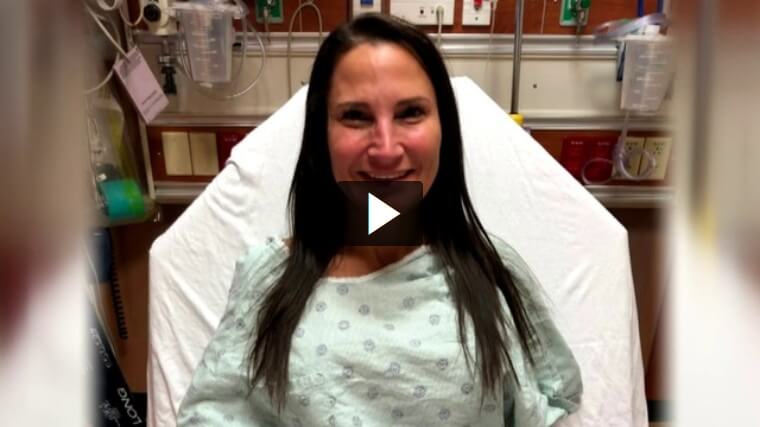Breast Implants Linked to Rare Cancer Are Recalled Worldwide
By Denise Grady – July 24, 2019
Textured breast implants made by Allergan that have been linked to an unusual cancer are being recalled in the United States at the request of the Food and Drug Administration, and will also be recalled globally, the agency announced on Wednesday…

BIA-ALCL Advisory Update
The following advisory represents a collaborative effort between ASPS and ASAPS to produce biannual updates on recent disease developments, government regulatory communications, and consensus recommendations.
Q: What is BIA-ALCL?
A: BIA-ALCL (Breast Implant-Associated Anaplastic Large Cell Lymphoma) is a rare spectrum of disorders that can range from a benign collection of fluids around the breast implant (seroma) to a rare lymphoma. BIA-ALCL is not a cancer of the breast tissue itself. When caught ear
Q: What are the symptoms of BIA-ALCL?
A: The most common presenting symptom of BIA-ALCL is a swelling of the breast that develops over several years (average 8 years, range 2 to 28 years) after the insertion of textured breast implants. The disease can also present as a lump in the breast or the lymph node in the armpit.
Q: What is the risk of developing BIA-ALCL?
A: The first symptom of BIA-ALCL is usually a swelling of the breast between 2 to 28 years after the insertion of breast implants, with an average of about 8 years after implantation. The swelling is due to a collection of fluid surrounding the implant. This fluid can cause the breast to enlarge significantly over a period of days or weeks. It can also present as a lump in the breast or armpit, firmness of the breast, or pain. It is usually easily and completely treated if patients see their doctor at the first symptom.
Q: What is the risk of developing BIA-ALCL?
A: Based on current data, the risk can be explained by the texture grade of the implants
as follows:
- Grade 1 (Smooth only) – The current lifetime risk is zero.
- Grade 2 (e.g. Microtexture, Siltex and similar) – 1:82,000
- Grade 3 (e.g. Macrotexture, Biocell and similar) – 1:3,200
- Grade 4 (e.g. Polyurethane) – 1:2,800*
Q. Have there been any deaths due to BIA-ALCL?
A. There have been 16 confirmed deaths, (globally), attributed to BIA-ALCL since the disease was first reported nearly 20 years ago. However, when detected early before it becomes a lymphoma, BIA-ALCL is readily cured with removal of the implant and surrounding scar pocket or capsule.
Q: Is it a problem with Saline or Silicone implants?
A: Of the 414 reported cases of BIA-ALCL, 312 reports included information on the types of implants used. Of those,234 reported implants with silicone gel and 119 reported implants filled
with saline. It appears to purely be related to the surface of the implant and not to what the implant is filled with.
Q: How does this impact those with breast implants?
A: ASAPS and ASERF emphasize that the most important issue for women with breast implants is to screen for breast cancer with self-exam, a regular physician exam, and mammography/ultrasound/MRI as recommended by their physician. All women should see their plastic surgeon immediately if they note a change to the size, feel, or shape of their breasts
Q: Why would my surgeon have recommended textured implants for me?
A: There are two primary reasons your surgeon may have recommended textured surface breast implants. First is that some data has shown a lower rate of capsular contracture (firm scar tissue formation around the implant). Second, all teardrop or anatomic shaped implants have a textured surface to help hold them in place. Some surgeons believe these implants can offer an enhanced shape for certain patients, perhaps with a reduced risk of rippling.
Q. How is BIA-ALCL treated and what is the prognosis?
A. Current recommendations for the treatment of BIA-ALCL call for bilateral capsulectomy (removing all the scar tissue) and removal of the old breast implants. This is a very common procedure performed by plastic surgeons, identical to what is done when an implant has ruptured or capsular contracture has developed. Smooth implants can be put back in or the patient can choose not to have implants. In all but a few cases, the disease has been fully resolved by this surgery alone. The majority of patients require no additional treatment. However, if the disease has spread to lymph nodes or adjacent tissues, chemotherapy or radiation may be necessary. This has only been necessary in a small percentage of patients.
Q: How is BIA-ALCL treated and what is the prognosis?
A: Diagnosis and treatment follow standardized guidelines established by the National Comprehensive Cancer Network (NCCN). (Algorithm available on ASPS and ASAPS websites). Current recommendations for the treatment of BIA-ALCL call for total capsulectomy, removal of the breast implant, as well as excision of any associated lumps or masses. Cases have been reported where both breasts are affected, and therefore surgeons may consider removing both implants and capsules. All cases of BIA-ALCL with disease limited to the scar tissue around the breast capsule and treated with complete surgical excision have been cured to date. The majority of early-stage patients treated with total capsulectomy require no additional treatment. Chemotherapy is required for unresectable disease, lymph node spread or distant metastases.
Q. Should patients have their implants removed because of a risk of BIA-ALCL?
A. Since BIA-ALCL has only been found with textured breast implants, smooth implant patients do not need to be concerned. For textured implant patients, neither the FDA nor any plastic surgery society currently recommends that women should preventatively remove textured breast implants to prevent BIA-ALCL. However there are women who have been concerned enough about BIA-ALCL and have chosen to have their implants removed. There are some women who were already considering a breast implant revision, and the BIA-ALCL issue gave them one more reason to decide to proceed.
Q: Should women with breast implants be screened for BIA-ALCL?
A: There is no blood test to specifically screen for BIA-ALCL. The expert opinion is that asymptomatic women without breast changes do not require more than routine mammograms
and breast exams. But if a patient experiences a change in her breasts – especially if there is swelling or a lump – she should undergo immediate examination, imaging, and consultation with
a plastic surgeon. If there is fluid around the implant the fluid should be aspirated under ultrasound guidance and sent for analysis.
Q: What causes BIA-ALCL?
A: ASAPS, ASERF, the FDA, and the implant manufacturers are intensely studying BIA-ALCL. To date, no specific causal factors have been identified. Implant texturing, bacteriologic contamination, and genetic factors have been implicated and are undergoing further study. The best theory today is that a combination of four factors are required for the development of BIAALCL:
- Highly textured implant
- Chronic bacterial-inflammation
- Genetic pre-disposition
- Time
The source of the chronic inflammation is thought to be bacteria that have been identified around the implants in affected breasts. Evidence is accumulating that a long-term inflammatory response to the presence of these bacteria is one of the factors that may cause BIA-ALCL. Research is ongoing and cases are being monitored.
Genetic factors may play a role. Some geographic areas have reported very few cases. Ongoing data collection worldwide will help to determine whether or not there are any genetic propensities for this disease.
Q: Does ASAPS recommend against the use of textured implants?
A: The available data does not support discontinuance of textured implants. The best practice is always for the physician to discuss with each patient the known risks and potential complications associated with any procedure. It is important for the patient and her doctor to frankly discuss all options available, and the risks involved.
Every plastic surgeon offers patients options regarding breast implants in terms of sizing, shape, and surface. Depending on a particular patient’s needs, a textured implant may be preferable. The plastic surgeon must provide a frank and transparent discussion regarding the benefits and risks of implants, both smooth and textured. The patient must then make an informed decision, based upon her own assessment of her needs and the risks involved.
Dr. Sudarsky presenting a poster at the Society of Advanced Wound Care spring meeting . She and Dr Stokes have utilized closed incision negative pressure wound therapy to reduce the suture line healing complications from mastectomy surgery.
Dr. Sudarsky recipient of real self fellowship!
Healing the Children
Click Here To Donate And Learn More!


Articles


GAME CHANGER
BREAST CANCER PATIENTS HAVE AN ALTERNATIVE WHEN IT COMES TO POST-MASTECTOMY RECONSTRUCTION.
Media Group Lifestyle
Read More
When a breast cancer doctor becomes the patient
Fort Lauderdale specialist tackles disease head on.
Local 10 News

It began 30 years ago when her own mother was diagnosed with breast cancer.
“At that time, I was 15 years old and she was 40 years old,” Stokes said. “My dad said, ‘I hope she lives long enough to see the kids graduate high school,’ because he didn’t think he could do it on his own, and she’s alive today.”





